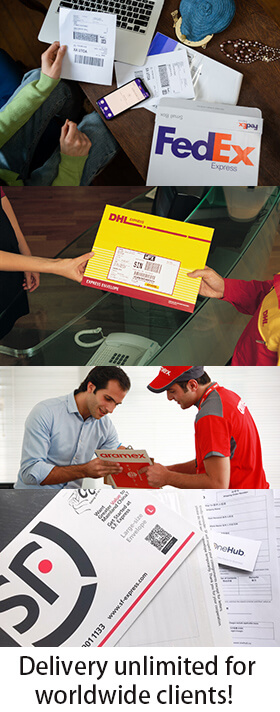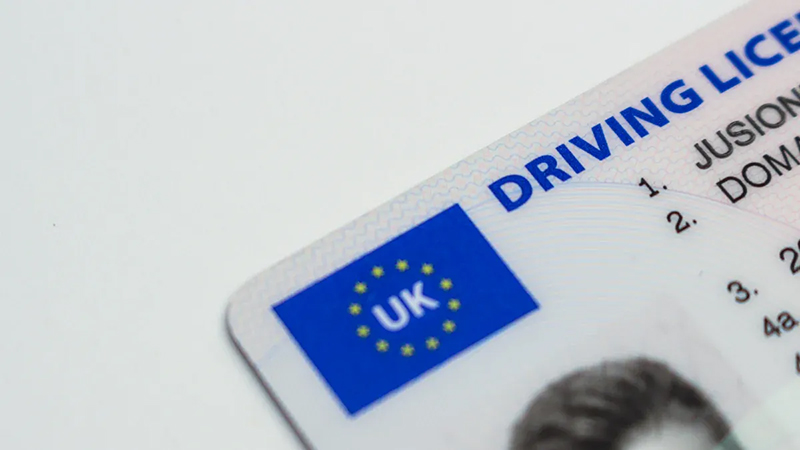
Fraud prevention means spotting fake IDs quickly and correctly. Fake IDs cause more identity theft and money scams every year. In 2024, people checked over 75 billion IDs worldwide. By 2025, this number will reach 86 billion. Identity fraud grows 12% each year, costing businesses $1 trillion. Deepfake technology makes spotting fakes harder, rising 700% in 2023. If you work in stores, hotels, or the police, staying aware helps you follow rules and keep money safe.
Key Takeaways
- Check the physical features of IDs. Real IDs feel smooth and bend easily, while fakes may feel rough or stiff.
- Use tools like ID scanners and UV lights. These tools help spot hidden features that are hard to see with the naked eye.
- Train staff regularly on ID verification. Well-trained employees can catch fake IDs more effectively and keep your business safe.
- Always compare the photo on the ID with the person holding it. Look for differences in facial features to spot potential fakes.
- Stay updated on new ID security features. Fraudsters change their tactics, so knowing the latest helps you stay ahead.
Types of Fake IDs
Forged Fake IDs
Forged IDs are fake documents made from scratch. They look like real government IDs but are not genuine. You can spot them by checking the material and printing quality. For example, the lamination might feel bumpy, or the card could be lighter than a real ID.
In 2025, AI tools help catch these fakes faster. Even though AI-made IDs are advanced, they still have mistakes. Data shows regular fake IDs are caught 95% of the time, while AI-made ones are caught 99.6%. States like New York, Texas, and Arizona find the most fake IDs and catch them all due to frequent checks.
| Type of Fake ID | Catch Rate (%) | Notes |
| Non-AI Generated IDs | 95 | Checked using special tools and systems. |
| AI-Generated IDs | 99.6 | Easier to spot because of small production errors. |
| High-Volume States | 100 | Fake IDs are common but are always detected. |
Borrowed or Stolen Fake IDs
Borrowed or stolen IDs are real but used by the wrong person. These are harder to catch since the ID itself is valid. Compare the photo on the ID with the person holding it. Look for differences in features like the jawline or eye shape.
This type of fraud causes big problems. Borrowed or stolen IDs often lead to synthetic identity fraud, costing billions. For example, in 2020, losses reached $20 billion, and reports of suspicious activity keep increasing.
| Year | Estimated Losses from Synthetic Identity Fraud | Notes |
| 2016 | $6 billion | Shared by Federal Reserve Bank of Boston |
| 2020 | $20 billion | Reported losses in 2022 |
| 2021 | $182 million in suspicious activity | Shared by FinCEN |
| 2024 | 3,000 suspicious activity reports submitted | Shows ongoing detection challenges |
Altered Fake IDs
Altered IDs are real documents that have been changed. Common changes include editing the birth date, name, or expiration date. You can spot these by looking for uneven fonts, smudges, or text that doesn’t line up.
Studies show altered IDs cause most synthetic fraud, making up 85% of identity fraud in the U.S. Smaller companies report losing money often, with 75% affected by fraud. Bigger companies face even more issues, with all of them reporting fraud cases.
| Evidence Type | Details |
| Prevalence of Synthetic Fraud | Makes up about 85% of identity fraud in the U.S. |
| Difficulty in Identification | Fraud isn’t reported right away because there’s no clear victim. |
| Impact on Management Companies | 75% of small companies and 100% of big ones lose money due to fraud. |
| Identification Timing | 73% of managers find fraud after tenants move in, usually within six months. |
Step-by-Step Methods to Identify Fake IDs
Inspect Physical Features
Start by checking how the ID looks and feels. Real IDs are made with strong materials and careful designs. Fake IDs often miss these details.
Physical Touch and Bend Tests:
- Touch Test:Feel the ID with your fingers. Real IDs are smooth, but fake ones might feel rough or uneven.
- Bend Test:Bend the ID gently. Real IDs bend easily and go back to shape. Fake ones might crack or feel stiff.
Visual Inspection Techniques:
- Overall Appearance:Look for mistakes like uneven fonts or crooked text.
- Photo Check:Match the photo on the ID to the person holding it. Focus on features like the jawline or eyes.
- Microprinting Check:Use a magnifying glass to find tiny writing. Real IDs have clear microtext, but fake ones often don’t.
Tip: Pay close attention to details. If something seems wrong, trust your gut and check more carefully.
Check Holograms and UV Features
Holograms and UV marks are great ways to spot real IDs. These features are hard to copy and often unique to each state.
Holograms:
Real IDs have holograms that change when you tilt them. For example, a state hologram might show a seal that shifts colors. Fake IDs may have blurry or missing holograms.
UV Features:
Shine a UV light on the ID to see hidden images. Real IDs have UV designs like seals or patterns that don’t show in normal light. These designs are different for each state, making them hard to fake.
Advanced Tools:
Special ID scanners can check holograms, UV marks, and other features. These scanners use smart technology to find mistakes people might miss. Studies show they catch 95% of fake IDs.
Note: Each state has its own hologram and UV designs. Learning these details can help you spot fake IDs better.
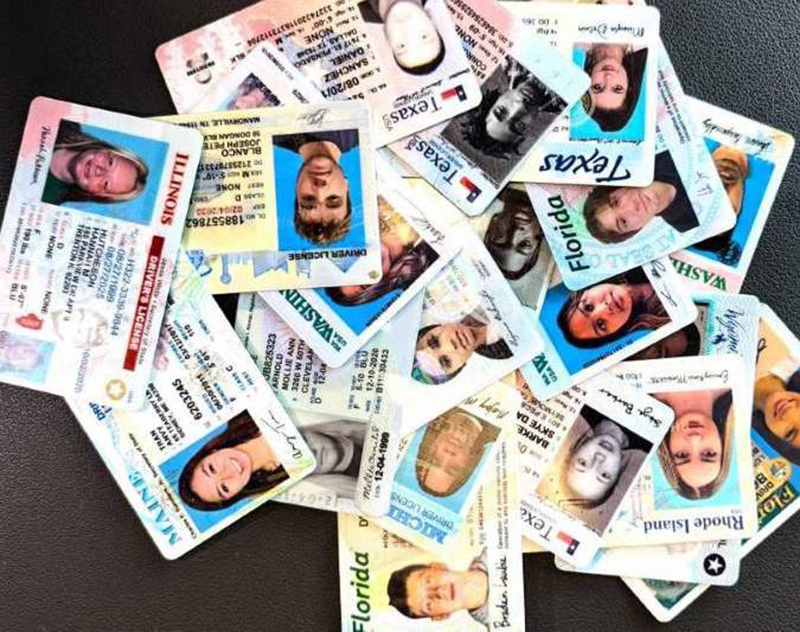
Verify Laser Embossing and Microprinting
Laser embossing and microprinting are extra security features that make IDs harder to fake. These details are tough to copy and help prove an ID is real.
| Feature | Description | How to Spot Real IDs |
| Laser Embossing | Raised designs or text made with lasers. | Real IDs have clear embossing that changes color in light. Fakes look blurry or messy. |
| Holograms | State-specific designs that shift when viewed at angles. | Real IDs have detailed holograms that change. Fake ones are less detailed or missing. |
| Microtext | Tiny writing was added to holograms. | Real IDs have sharp microtext that’s hard to copy. Fake IDs often don’t have it or it looks unclear. |
Use tools like magnifying glasses or cameras to check these features. These tools help you see mistakes in embossing or microtext that are hard to spot with your eyes.
Tip: Ask for another ID if you suspect a fake one. Most people using fake IDs won’t have matching documents to show.
Check Fonts, Spacing, and Spelling
Look closely at the fonts, spacing, and spelling on an ID. These small details can show if an ID is fake or real. Real IDs have matching fonts and even spacing. Fake IDs often use different fonts or uneven spaces.
Font Matching:
Check the writing style on the ID. Real IDs use the same font everywhere. Fake IDs might mix fonts or use odd-looking ones. For instance, the name’s font size might not match the address size.
Spacing Problems:
Look at how the text lines up. Real IDs have straight and even text. Fake IDs often have letters that are too close or too far apart.
Spelling Mistakes:
Spelling errors are a big clue of a fake ID. Government IDs almost never have mistakes in names or addresses. If you see a misspelled word, it’s likely fake.
Tip: Use a ruler to check if the text is straight. This simple trick helps you spot spacing problems fast.
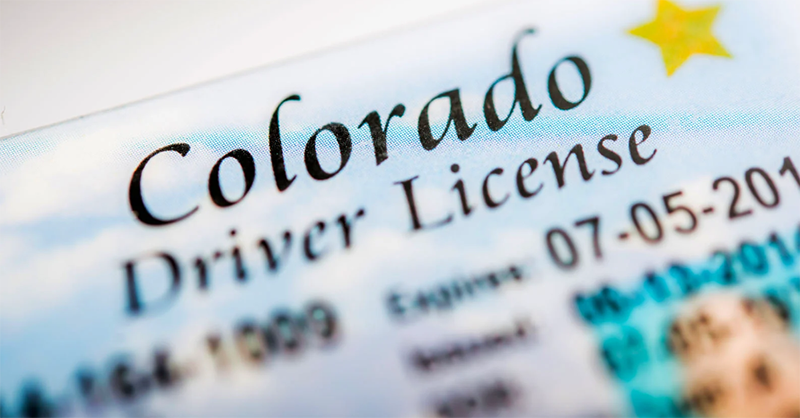
Match the Photo to the Person
Comparing the photo on the ID to the person holding it is a great way to find fake IDs. Focus on features like the jawline, nose, and eyes. These are harder to change than hair or makeup.
Facial Recognition Success:
In 2025, facial recognition tools are over 99% accurate. They work well for all groups, with accuracy above 97.5%. These tools are better than fingerprints or eye scans.
Manual Checking Tips:
- Look for differences in face shape. For example, the person might have a rounder face than the photo.
- Pay attention to the eyes. Eye shape and distance are unique and hard to change.
- Notice aging signs. A photo from years ago might not match how the person looks now.
Note: If unsure, ask the person to take off glasses or hats. This makes it easier to compare their face to the photo.
By carefully checking the photo and comparing it to the person, you can catch many fake IDs that might be missed.
Tools and Techniques for Spotting Fake IDs
Using ID Scanners
ID scanners are great tools to find fake IDs. They check the barcode or magnetic stripe on an ID. Then, they compare the data with official records to verify it. This helps spot errors that are hard to see by eye.
Modern scanners, like Intellicheck, are very accurate. In 2025, studies show they catch fake IDs 100% of the time. This makes them important for businesses and the police. They save time and reduce mistakes during checks.
Always update your scanner’s software. This ensures it recognizes new ID security features. Also, don’t rely only on the scanner. For example, if the scanner says the ID is real, but the photo doesn’t match, investigate further.
Tip: Train your team to use scanners well. Skilled staff can make the most of this tool.
Employing UV Lights
UV lights are another helpful way to spot fake IDs. Many real IDs have UV-sensitive designs, like hidden seals or patterns. These details glow under UV light but stay invisible in normal light.
To use a UV light, shine it on the ID and look for glowing features. Each state has unique UV designs, so learn the ones for your area. Fake IDs often miss these details or copy them poorly.
UV lights are cheap and easy to use. They work well in dark places like bars or clubs. But don’t depend only on UV lights. Use them with other tools, like scanners, for better results.
Note: Keep your UV light working well. A weak light might miss important details.
Leveraging Mobile Verification Apps
Mobile apps are now a smart way to check IDs. These apps use your phone’s camera to scan and verify IDs. They connect to databases and give instant results.
Many apps use AI to find small errors. For example, they can spot wrong formats, bad security features, or mismatched data. This makes them great for catching advanced fake IDs.
Using these apps is simple. Open the app, scan the ID, and check the results. Some apps also verify age or send fraud alerts. They’re perfect for small businesses that can’t buy costly tools.
Tip: Pick a trusted app with strong security. This keeps customer data safe.
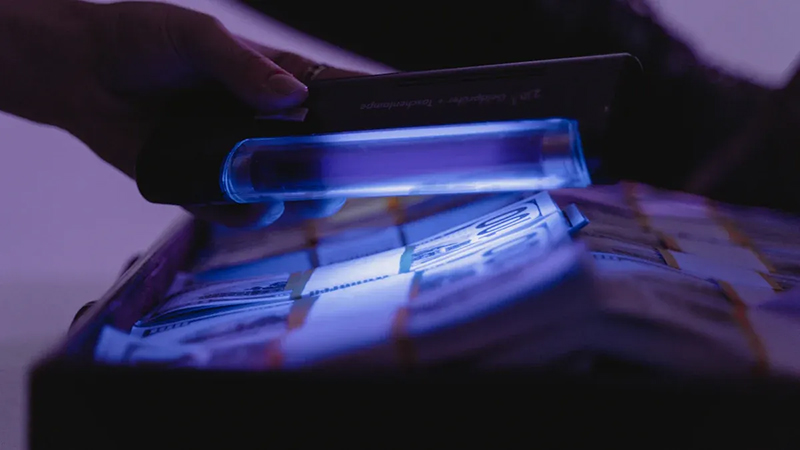
Training Staff for ID Verification
Teaching your staff is a great way to improve ID checks. Workers who know how to find fake IDs can keep your business safe. In 2025, using both skilled people and smart tools is the best method. But even the best tools won’t work well without proper training.
Why Staff Training is Important
Many businesses depend on machines for ID checks. Tools like scanners and apps are helpful, but can’t replace human judgment. For instance, a scanner might say an ID is real, but only a trained worker can match the photo to the person. Regular training keeps your team updated on new ways to spot fake IDs.
Did You Know?
A survey showed 61% of people think current ID checks are “average” or worse. This proves that better training is needed.
Key Training Areas
Focus on these important skills when training your staff:
Spotting Fake ID Features
Teach workers to look for signs like smudges, uneven fonts, or bad spacing. Show them how to use tools like magnifying glasses to check for tiny writing or raised designs.
Learning State-Specific Details
Each state has special features like holograms or UV marks. Train your team to know these details and how they differ between states.
Using Technology the Right Way
While 51% of people think scanners are the best, they work better with human help. Teach your staff to use scanners and apps correctly. Remind them to double-check results by looking at the ID themselves.
Practicing Photo Matching
Comparing the photo on an ID to the person takes practice. Train workers to focus on features like the jawline, eyes, and nose. These are harder to change than hair or makeup.
Why Regular Training Helps
Holding training sessions often can make your team much better at spotting fake IDs. Here’s why:
Lower Risks
Missing fake IDs can lead to fines, lawsuits, or bad reviews. Training helps your staff catch fakes and avoid these problems.
Better Accuracy and Confidence
Trained workers feel sure about their skills. This means fewer mistakes and better results.
Happier Customers
Well-trained staff can check IDs faster, making customers wait less and feel happier.
Tip: Mix classroom lessons with hands-on practice. Role-playing ID checks help workers use what they’ve learned in real situations.
Best Method: People and Technology
The best way to check IDs is by using both people and tools. While 35% of people agree this works best, it only succeeds with good training. Teach your team how to use tools and make smart choices during manual checks.
Note: Update your training often to include new tricks and methods. Fraudsters always find new ways to make fake IDs, so staying ahead is key.
By focusing on staff training, you can protect your business from fake IDs. Your team will help keep your business safe and create a secure place for everyone.
Common Mistakes and Tips for Better ID Verification
Missing Signs of Tampering
A big mistake is not noticing tampering on an ID. Fraudsters often change real IDs by editing details like names or birth dates. These changes leave clues like smudges, uneven letters, or mismatched fonts. Always check the ID carefully for these signs.
Look closely at the edges of the ID. Tampered IDs might have peeling lamination or rough edges from cutting. Use tools like magnifying glasses to find small mistakes. For example, real microprinting looks clear, but fake ones may appear blurry or incomplete.
Tip: Trust your gut. If something seems wrong, double-check or ask for another ID.
Depending Only on Visual Checks
Only using your eyes to spot fake IDs can cause mistakes. Visual checks alone aren’t always enough. In 2025, a fake ID test showed a 21.87% error rate for manual checks. Without real ID data or standards, visual checks often fail.
To do better, use tools with your visual checks. Try ID scanners, UV lights, or mobile apps to confirm if the ID is real. These tools find hidden errors, like wrong barcodes or missing UV marks, that you can’t see.
Note: Tools work best when combined with human judgment.
Forgetting to Check Expiration Dates
Another common mistake is skipping the expiration date. An expired ID isn’t valid, even if it looks real. Fraudsters often use expired IDs, hoping you won’t notice. Always check the expiration date during your review.
Expired IDs can mean other problems too. For instance, someone with an expired ID might be hiding their true identity. Spotting this can help stop fraud or illegal actions.
Tip: Always check the expiration date first. This quick step can save time and prevent errors.
Staying Consistent and Vigilant
Being consistent and alert is important for checking IDs. Fraudsters keep finding new tricks, so you need to stay sharp. Always follow the same steps when checking an ID. This helps you avoid missing key details.
Why Consistency Is Important
Doing the same routine every time helps you catch mistakes. For example, start by checking how the ID looks and feels. Then, check holograms, UV marks, and the expiration date. Skipping steps can lead to errors, especially when you’re in a hurry.
Tip: Make a checklist for checking IDs. Use it every time to stay on track.
How to Stay Alert
Being alert means noticing small things that might show fraud. Fraudsters may try to distract you or rush the process. Stay calm and take your time to check each ID carefully.
Look for Nervous Behavior:
Watch if the person seems uneasy or avoids looking at you. These actions might mean they’re using a fake ID.
Ask for Another ID:
If something feels wrong, ask for another ID. Most fraudsters don’t have matching backup documents.
Building Good Habits
Consistency and alertness come from building strong habits. Practice following the same steps and staying focused, even during simple checks.
| Habit | Benefit |
| Using a Checklist | Helps you avoid skipping steps and missing details. |
| Staying Focused | Makes it easier to spot signs of tampering or fraud. |
| Asking Questions | Helps confirm if the ID is real and discourages fraudsters. |
Note: Checking IDs gets easier with practice. The more you do it, the better you’ll get at spotting fakes.
By being consistent and alert, you can protect your business and follow the rules. These habits make checking IDs faster, easier, and more accurate.
Finding fake IDs needs careful checks and smart tools. Look at physical features, holograms, and UV marks. Use tools like ID scanners and mobile apps to help. Train workers to spot tampering and match photos correctly.
New technology helps stop fraud better. AI tools cut fraud by 30%. Biometric systems make ID checks safer and more accurate. Combining these tools with staff training builds strong protection against fake IDs.
| Evidence Type | Description | Impact on Fraud Reduction | Source Link |
| AI-based fraud detection | AI tools help businesses reduce fraud by about 30%. | 30% reduction | Business Insider |
| Biometrics in fraud prevention | Generative AI improves biometric tools for safer ID checks. | Enhanced security | Mitek Systems |
Learn about new tools and trends often. Fraudsters change their tricks, so staying updated helps you stay ahead.
FAQ
What should you do if you think an ID is fake?
Stay calm and follow your steps to check the ID. Use tools like UV lights or scanners to confirm. If unsure, ask for another ID or tell your supervisor.
Are mobile apps safe for checking IDs?
Yes, mobile apps are safe if they have strong security. Pick apps with good reviews and features that protect customer data. These apps help you check IDs fast and correctly.
How often should staff learn about ID checks?
Train staff at least once a year to stay updated. Regular lessons teach them new ways to spot fraud. Practice sessions make them better and more confident.
Can fake IDs fool scanners?
Some fake IDs might trick older scanners. But new scanners catch most fakes if updated. Always check the scanner’s results by looking at the ID yourself.
Why is checking expiration dates important?
Expired IDs aren’t valid and can hide fraud. Fraudsters often use them to avoid being caught. Spotting expired IDs helps protect your business from problems.
Tip: Start every check by looking at the expiration date. It’s quick and easy.


